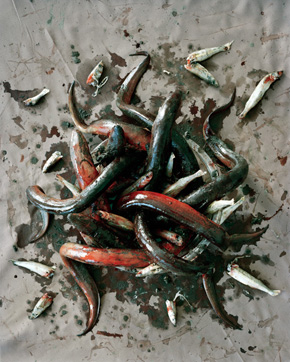
Tara Sellios, Retribution, Untitled No. 1, photograph, 2011.
Courtesy of the artist and Gallery Kayafas.
Work by Roberta Anslow, Hyman Bloom, Aileen Callahan, Tara Sellios, and Others
September 9 – March 24, 2013
Members’ Preview Reception September 15, 2012, 6 – 8pm
Artists Talk Tara Sellios, Sunday, September 30, 3pm
About the Exhibit
Artists in this group use various expressive means to challenge the romanticized notion of the peaceful sea. Through paintings, photographs, and drawings, artists present an alternative view. The world where the fishes prevail can be harsh, frightening, and even monstrous.
About the Artists Roberta Anslow, Hyman Bloom, Aileen Callahan, and Tara Sellios
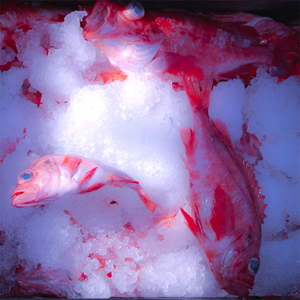 |
Roberta Anslow is an award-winning photographer who specializes in original, natural light photography and digital art collages. Known for her underwater and “Fresh Catch” photographic series, she creates abstract imagery from everyday objects. Anslow has exhibited her work throughout New England, including Cape Cod Arts Association, Post Road Art Center, and the Wayside Inn Gallery.
Roberta Anslow, Red Fish, Dead Fish,2011 |
| Hyman Bloom was one of a group of artists who formed the Boston Expressionists, a school of artists known for their blend of visionary painting, dark humor, religious mysticism, and social commentary. As a Jewish immigrant, Bloom drew from his Eastern European heritage, in addition to his awareness of European symbolism and German expressionism.Working from memory rather than direct from nature, he expressed ideas about the Jewish Talmud and the human condition through vivid use of light and color. Hyman Bloom, Seascape II, 1974, oil/canvas, 55 x 72 inches, Collection, Danforth Museum of Art Gift of Dr. Ephraim and Mrs. Dagmar Friedman |
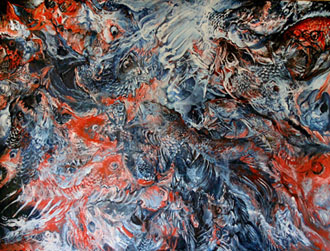 OLYMPUS DIGITAL CAMERA |
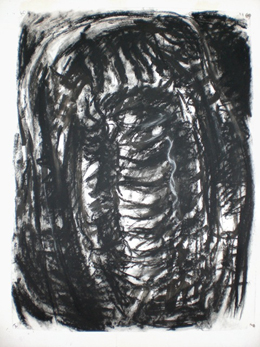 |
Aileen Callahan has received numerous grants and awards, including the Lincoln Fellowship in mural painting. She received two full scholarships to the Skowhegan School of Painting and Sculpture and has completed ten murals, two in fresco. Her exhibitions include the Academy of Arts & Letters Invitational in New York City.
Aileen Callahan’s expressive mark-making wrestles with mythic forms that are capable of holding vast space and meaning. In her series of drawings on Moby Dick, Callahan focuses her concerns on the middle ground, between seeing and knowing. “Moby Dick is like visualizing the sea, his element,” Callahan writes. “He is present but elusive, massive yet dissolving figureless into passing motion, weighted yet suspended by a fierce buoyancy. The white whale of Melville inhabits the mystery of scale where imagination and physical reality ignite each other.” Aileen Callahan, The Spine’s Tale in the Skin/Moby Dick,2008 charcoal/wash. Courtesy of the artist |
| Tara Sellios is a Boston-based artist who uses her contemporary, large-format photographs to re-interpret traditional memento mori themes, as seen in Dutch still lifes. In 2010, she received a BFA from the Art Institute of Boston and has since participated in several group shows, including the Griffin Museum of Photography’s annual juried exhibition. She has had solo shows at the Suffolk University Art Gallery and Gallery Kayafas. Sellios received a Massachusetts Cultural Council artist fellowship and was chosen as one of the top seven emerging photographers, in 2011, by Art New England.
Tara Sellios, Untitled No. 10 |
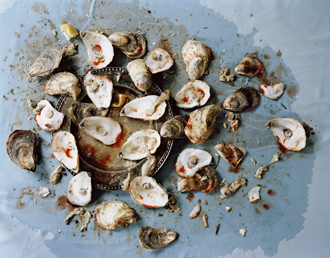 |
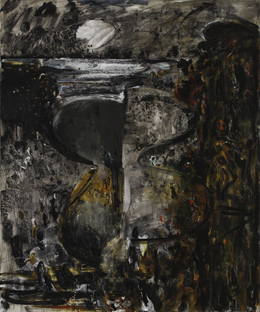 |
John Walker was born in 1939 in Birmingham, England, graduated from the Royal College of Art and has taught in England, Australia, China and in the US, where he is now head of the graduate painting program at Boston University. A great admirer of the Spanish artist Francisco Goya and his work depicting the disasters of war, Walker explored the impact of World War I in his Recollections series (out of 8 brothers, Walker’s father was the only one to survive the Battle of the Somme). Seascapes depicting the coastal mudflats near his summer home in Maine feature a dark and foreboding vision of the ocean at low tide. Some paintings incorporate sand and dirt into thickly painted impasto, perhaps as a reference to the mud filled trenches in which his father once fought.
John Walker, Moonlight, Dirty Cove, oil on canvas, 2001. Collection Danforth Museum of Art. Gift of the Estabrook Foundation, 2009.61 |
